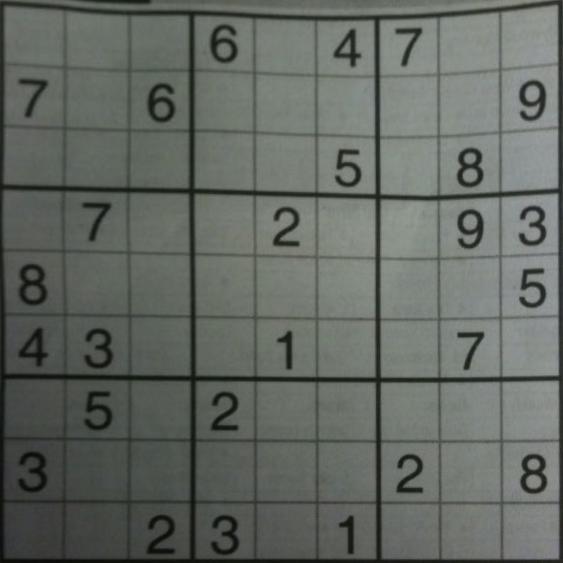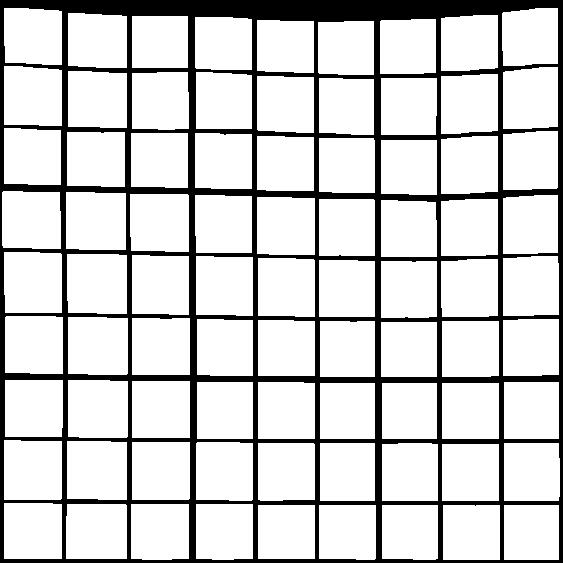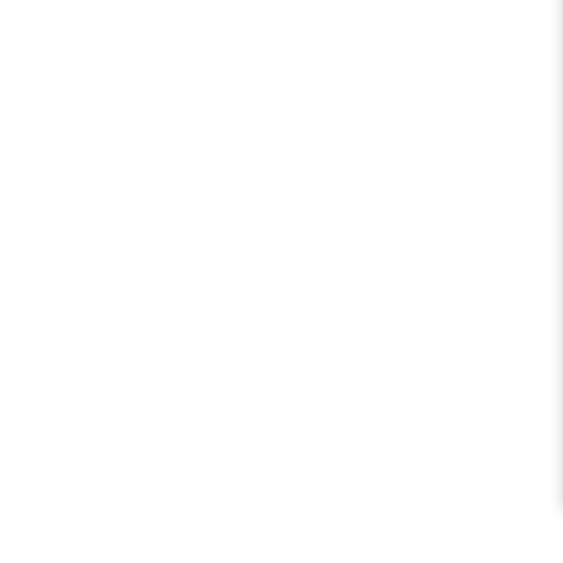I've been trying for the last few days to get a sudoku grid from a picture, and I have been struggling on getting the smaller squares of the grid. I am working on the picture below. I thought processing the image with a canny filter would work fine, but it didn't and I couldn't get every contour of each square. I then put adaptive threshold, otsu, and a classic thresholding to the test, but every time, it just could not seem to capture every small square.
The final goal is to get the cells containing a number, and recognize the numbers with pytorch, so I would really like to have some clean images of the numbers, so the recognition doesn't screw up :)
Would anyone have an idea on how to achieve this? Thanks a lot in advance! :D

Here's a potential solution:
-
Obtain binary image. Convert image to grayscale and adaptive threshold
-
Filter out all numbers and noise to isolate only boxes. We filter using contour area to remove the numbers since we only want each individual cell
-
Fix grid lines. Perform morphological closing with a horizontal and vertical kernel to repair grid lines.
-
Sort each cell in top-to-bottom and left-to-right order. We organize each cell into a sequential order using imutils.contours.sort_contours() with the top-to-bottom and left-to-right parameter
Here's the initial binary image (left) and filtered out numbers + repaired grid lines + inverted image (right)


Here's a visualization of the iteration of each cell

The detected numbers in each cell

Code
import cv2
from imutils import contours
import numpy as np
# Load image, grayscale, and adaptive threshold
image = cv2.imread('1.png')
gray = cv2.cvtColor(image, cv2.COLOR_BGR2GRAY)
thresh = cv2.adaptiveThreshold(gray,255,cv2.ADAPTIVE_THRESH_GAUSSIAN_C, cv2.THRESH_BINARY_INV,57,5)
# Filter out all numbers and noise to isolate only boxes
cnts = cv2.findContours(thresh, cv2.RETR_TREE, cv2.CHAIN_APPROX_SIMPLE)
cnts = cnts[0] if len(cnts) == 2 else cnts[1]
for c in cnts:
area = cv2.contourArea(c)
if area < 1000:
cv2.drawContours(thresh, [c], -1, (0,0,0), -1)
# Fix horizontal and vertical lines
vertical_kernel = cv2.getStructuringElement(cv2.MORPH_RECT, (1,5))
thresh = cv2.morphologyEx(thresh, cv2.MORPH_CLOSE, vertical_kernel, iterations=9)
horizontal_kernel = cv2.getStructuringElement(cv2.MORPH_RECT, (5,1))
thresh = cv2.morphologyEx(thresh, cv2.MORPH_CLOSE, horizontal_kernel, iterations=4)
# Sort by top to bottom and each row by left to right
invert = 255 - thresh
cnts = cv2.findContours(invert, cv2.RETR_TREE, cv2.CHAIN_APPROX_SIMPLE)
cnts = cnts[0] if len(cnts) == 2 else cnts[1]
(cnts, _) = contours.sort_contours(cnts, method="top-to-bottom")
sudoku_rows = []
row = []
for (i, c) in enumerate(cnts, 1):
area = cv2.contourArea(c)
if area < 50000:
row.append(c)
if i % 9 == 0:
(cnts, _) = contours.sort_contours(row, method="left-to-right")
sudoku_rows.append(cnts)
row = []
# Iterate through each box
for row in sudoku_rows:
for c in row:
mask = np.zeros(image.shape, dtype=np.uint8)
cv2.drawContours(mask, [c], -1, (255,255,255), -1)
result = cv2.bitwise_and(image, mask)
result[mask==0] = 255
cv2.imshow('result', result)
cv2.waitKey(175)
cv2.imshow('thresh', thresh)
cv2.imshow('invert', invert)
cv2.waitKey()
Note: The sorting idea was adapted from an old previous answer in Rubrik cube solver color extraction.











 已为社区贡献126445条内容
已为社区贡献126445条内容

所有评论(0)